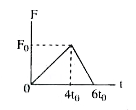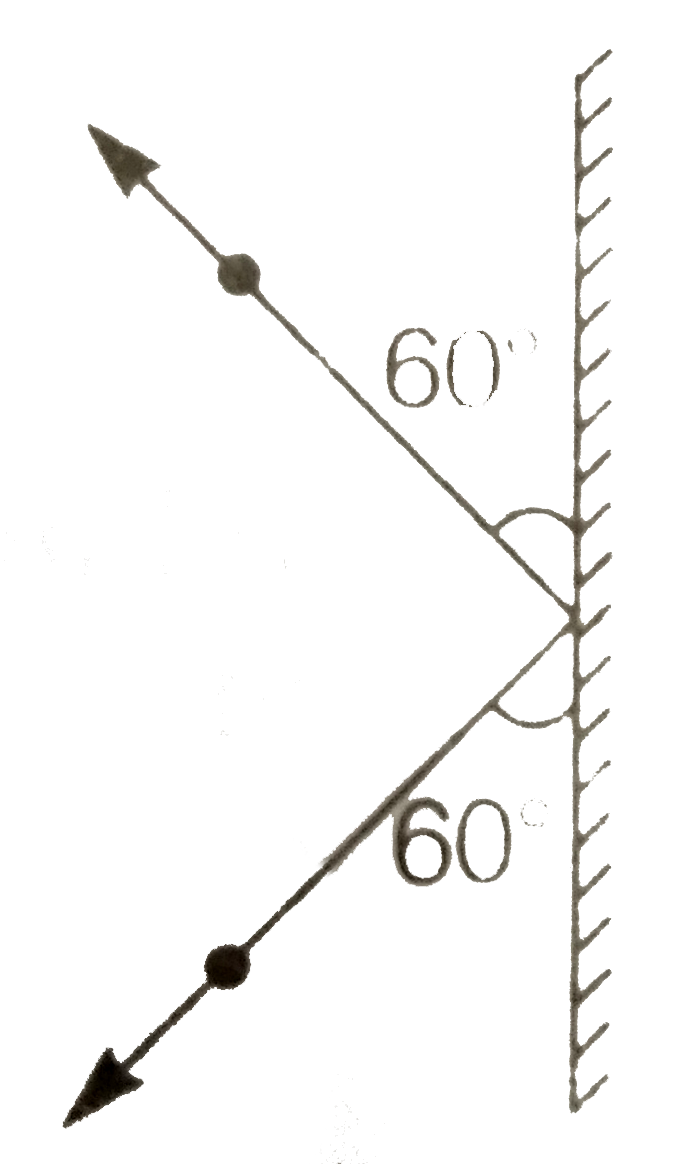A rubber ball of mass kg hits the ground at same angle without any change in speed . If the speed of ball is 1 m/s and the period of contact between the ball and floor is s, find the average force exerted by the ball on the ground .
To solve the problem, we need to find the average force exerted by the ball on the ground when it hits the ground and bounces back. Here are the steps to arrive at the solution:
Step 1: Identify the given data
- Mass of the ball, m=0.4kg
- Speed of the ball before hitting the ground, u=1m/s (downward)
- Speed of the ball after bouncing, v=1m/s (upward)
- Time of contact with the ground, t=0.4s
Step 2: Determine the change in velocity
The initial velocity (downward) can be taken as negative, and the final velocity (upward) can be taken as positive. Thus:
- Initial velocity, u=−1m/s
- Final velocity, v=+1m/s
The change in velocity (Δv) is calculated as:
Δv=v−u=1−(−1)=1+1=2m/s
Step 3: Calculate acceleration
Acceleration (a) is defined as the change in velocity divided by the time taken for that change:
a=Δvt=2m/s0.4s=5m/s2
Step 4: Calculate the average force
According to Newton's second law, the average force (F) exerted is given by:
F=m⋅a
Substituting the values:
F=0.4kg⋅5m/s2=2N
Conclusion
The average force exerted by the ball on the ground is 2N in the upward direction.
---
- Mass of the ball, m=0.4kg
- Speed of the ball before hitting the ground, u=1m/s (downward)
- Speed of the ball after bouncing, v=1m/s (upward)
- Time of contact with the ground, t=0.4s
The initial velocity (downward) can be taken as negative, and the final velocity (upward) can be taken as positive. Thus:
- Initial velocity, u=−1m/s
- Final velocity, v=+1m/s
Δv=v−u=1−(−1)=1+1=2m/s
Acceleration (a) is defined as the change in velocity divided by the time taken for that change:
a=Δvt=2m/s0.4s=5m/s2
According to Newton's second law, the average force (F) exerted is given by:
F=m⋅a
Substituting the values:
F=0.4kg⋅5m/s2=2N
The average force exerted by the ball on the ground is 2N in the upward direction.
Topper's Solved these Questions
- LAWS OF MOTIONBOOK - AAKASH INSTITUTE ENGLISHCHAPTER - LAWS OF MOTIONEXERCISE - Illustration
7 Videos
- LAWS OF MOTIONBOOK - AAKASH INSTITUTE ENGLISHCHAPTER - LAWS OF MOTIONEXERCISE - TRY YOURSELF
69 Videos
- KINETIC THEORYBOOK - AAKASH INSTITUTE ENGLISHCHAPTER - KINETIC THEORYEXERCISE - EXERCISE (ASSIGNMENT) SECTION - D Assertion - Reason Type Questions
10 Videos
- MAGNETISM AND MATTER BOOK - AAKASH INSTITUTE ENGLISHCHAPTER - MAGNETISM AND MATTER EXERCISE - ASSIGNMENT (SECTION D)
26 Videos
Similar Questions
A ball of mass 0.5kg moving with a velocity of 2m/s strikes a wall normally and bounces back with the same speed . If the time of contact between the ball and the wall is 1 millisecond , the average force exerted by the wall on the ball is
View SolutionA ball of mass 0.5kg moving with a velocity of 2m/s strikes a wall normally and bounces back with the same speed . If the time of contact between the ball and the wall is 1 millisecond , the average force exerted by the wall on the ball is
View SolutionA golf player hits a golf ball of mass 100 g and imparts it a speed of 50 m/s. If golf stick remains in contact with the ball for 0.01 s, then the average force exerted by the golf stick on the ball.
View SolutionA 3-kg steel ball strikes a wall with a speed of 10.0ms−1 at an angle of 60.0∘ with the surfaces of the wall. The ball bounces off with the same speed and same angle. If the ball was in contact with the wall for 0.2s, find the average force exerted by the wall on the ball.

View SolutionA ball of mass 1 kg is dropped from height 9.8 m, strikes with ground and rebounds at height 4.9 m, if the time of contact between ball and ground is 0.1 s then find impulse and average force acting on ball.
View SolutionA ball of mass 'm' is thrown with a speed v0 towards a bat. It rebounds along the same speed 2v0 . The variation of interaction force between the bat and ball is shown

Average force exerted by the bat on the ball is
View SolutionA ball of mass 3kg moving with a speed of 100 m/s, strikes a wall at an angle 60∘ (as shown in figure). The ball rebounds at the same speed and remains in contact with the wall for 0.2 s, the force exerted by the ball on the wall is

View SolutionA cricket ball of mass 150 kg is moving with a velocity of 12m/s and is hit by a bat so that ball is turned back with a velocity of 20m/s . The force of the blow acts for 0.01 s on the ball . Find the average force exerted by the bat on the ball.
View SolutionA 3.00kg steel hall strikes the wall with a speed of 10.0m/s at an angle of 60∘ with the surface. It bounces off with the same speed and angle. If the ball is in contact with the wall for 0.200s, what is the average force exerted by the wall on the ball?
View SolutionA 150 g ball, moving horizontally at 20m/s was hit straight back to bowler at 12m/s. If contact with bat lasted for 0.04 sec, then average force exerted by the bat on the ball is:-
View Solution
